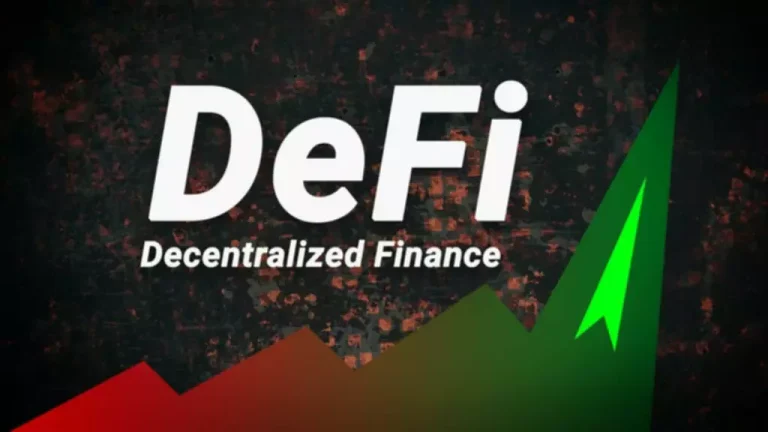This decreased difficulty serves as an incentive for extra miners to return to the network, guaranteeing the community remains strong and sufficiently decentralized. This is as a outcome of staking cryptocurrencies doesn’t require the identical amount of vitality as mining cryptocurrencies. When determining how to clear up the vitality consumption issue within the cryptocurrency sector, the proof-of-stake mannequin emerges as the apparent answer. Individuals can stake cryptocurrencies, for example, immediately from their crypto pockets. Tezos is among the authentic proof-of-stake blockchains and is helping the trade transition to this extra energy-efficient methodology.

While the 2 consensus mechanisms have the identical end result, they work in numerous ways. Proof of labor offers plenty of benefits, particularly for a easy however extraordinarily valuable cryptocurrency like Bitcoin. As a cryptocurrency’s value rises, extra miners are enticed to join the community, increasing its energy and safety. Because of the computing energy required, tampering with the blockchain of a useful cryptocurrency is impossible for any particular person or group.
Our Services
There’s no want to buy expensive computing techniques and devour huge quantities of electricity to stake crypto. It differs from proof-of-work considerably, mainly in the truth that it incentivizes honest habits by rewarding those that put their crypto up as collateral for an opportunity to earn extra. Under Ethereum’s PoS, if a 51% assault occurred, the sincere validators in the network could vote to ignore the altered blockchain and burn the offender(s) staked ETH. This incentivizes validators to behave in good faith to benefit the cryptocurrency and the community. A validator checks transactions, verifies activity, votes on outcomes, and maintains information. Miners work to resolve for the hash, a cryptographic number, to verify transactions.

Proof of stake was created as a substitute for proof of work and tends to be a extra energy-efficient methodology to validate blocks. Tezos was one of many early implementers of this consensus mechanism and stays one of the best proof-of-stake blockchains. Proof of work (PoW) is the consensus mechanism utilized by many of the first blockchains. As the name suggests, the fee to take part is “work” – specifically, the work of computers, which rely on power consumption. Proof of stake is a technique of verifying transactions on a blockchain that provides excessive security, decentralization and energy effectivity.
Less Power
In the PoW approach, the consensus is achieved when a person node writes the subsequent block in the blockchain to validate the transaction by solving a cryptographic hash in an operation known as mining. The means of writing the brand new block in a blockchain can require important computing energy and vitality consumption. PoW was outlined by Bitcoin creator Satoshi Nakamoto in the preliminary paper released in 2008 that outlined the Bitcoin model. The equipment and energy costs under PoW mechanisms are expensive, limiting access to mining and strengthening the safety of the blockchain. PoS blockchains scale back the quantity of processing power needed to validate block data and transactions.
But if there isn’t sufficient validator variety, the protocol can endure from censorship, security and slashing risks. These dangers, though, are much like PoW and plenty of different consensus mechanisms. When a transaction occurs with a cryptocurrency, a corresponding change on the blockchain on which the cryptocurrency relies https://www.xcritical.com/ must happen. All cryptocurrencies use blockchain technology at the basis, providing a distributed ledger of transactions. Blockchain supplies a set of distributed nodes in a decentralized approach and validating that a transaction has occurred requires some form of consensus to ensure integrity.
Proof of work is the unique crypto consensus mechanism, first utilized by Bitcoin. The winner will get to update the blockchain with the most recent verified transactions and is paid with a set amount of cryptocurrency by the community. For an rising know-how like blockchain, PoW has confirmed a particularly safe and trustworthy consensus mechanism. Miners are the people or entities that preserve the network by operating and managing nodes (computers). Miners direct nodes to expend electrical energy in the form of computational power to unravel increasingly complex mathematical problems. The miner that solves the issue first earns the best to add a block of transactions to the ever-growing chain of consecutive blocks, creating a single and verifiable history of knowledge on a PoW blockchain.
Delegated Proof Of Stake (dpos)
Other proof-of-stake blockchains such as Cardano do not have lock-up periods for the delegated stake. So if a user doesn’t want to run their node, they can delegate their ADA on ethereum switch to proof of stake to a stake pool with out dropping custody. Because extra highly effective machines require extra power to run, there’s a correlation between the power footprint and the security of the blockchain.

Bakers ensure all transactions in a block are right and also verify the order of transactions. Essentially, the security of the proof-of-work network depends upon the amount of energy used. At first look, proof of work and proof of stake could not seem simple to grasp. The good news is that breaking it down into easy language could make the details extra digestible.
Solana, Terra and Cardano are among the many biggest cryptocurrencies that use proof of stake. Ethereum, the second-largest crypto by market capitalization after Bitcoin, is within the midst of a transition from proof of work to proof of stake. This website is utilizing a security service to protect itself from on-line attacks. There are a number of actions that would set off this block including submitting a certain word or phrase, a SQL command or malformed information. Are these critiques sincere, or are they primarily motivated by profit-driven incentives?
Consensus Mechanisms
Since cryptocurrencies are decentralized and not under the control of economic establishments, they need a method to confirm transactions. Certain implementations of proof of stake might leave blockchains extra weak to totally different kinds of assaults than proof of labor, corresponding to low-cost bribe assaults. Susceptibility to attacks decreases the overall safety of the blockchain. Most other safety features of PoS are not marketed, as this may create a chance to circumvent safety measures. However, most PoS techniques have further security measures in place that add to the inherent security behind blockchains and PoS mechanisms. The algorithm makes use of a pseudo-random election course of to determine which node is the validator.
Fidelity ‘will not participate’ in proof-of-stake, amends staking language in Ethereum ETF filing – Crypto Briefing
Fidelity ‘will not participate’ in proof-of-stake, amends staking language in Ethereum ETF filing.
Posted: Tue, 21 May 2024 11:23:04 GMT [source]
In centralized systems, this supply is decided by a controlling entity, however with a distributed system, many authorities, referred to as nodes, should cooperate to keep up the community. The system requires a computational mechanism by which nodes come to an agreement or consensus of both the most recent and accurate record of knowledge across the system. Consensus mechanisms have established consensus among database nodes, software servers, and different enterprise infrastructure for many years. Proof of stake blockchains use a network of “validators” who contribute or “stake” their own crypto in exchange for a chance to validate new transactions, update the blockchain, and earn a reward.
The proof-of-stake consensus mechanism goals to make blockchains sooner whereas reducing the environmental influence of operating these methods. PoS chains can deal with extra transactions per second despite consuming significantly much less vitality. However, the model takes a different approach to fixing the blockchain trilemma. Both PoS and PoW are consensus mechanisms for cryptocurrency nodes on blockchain. The method by which the two consensus approaches work varies considerably. The staking pool’s owner sets up the validator node, and a gaggle of individuals pool their coins together for a better chance of profitable new blocks.
Subscribe To Decode Crypto
Several altcoins are choosing to use Proof of Stake (PoS) as their consensus mechanism, most notably Ethereum. The PoS consensus mechanism is a big shift from Bitcoin’s legacy Proof of Work system of consensus mechanism. We will introduce you to consensus mechanisms, what PoS is, why it is superior to Proof of Work, and what points it may have in its development. Validators are rewarded by the cryptocurrency, usually with new tokens for participating in the PoW effort.

Proof-of-stake was first discussed in 2011 on the BitcoinTalk discussion board in response to bitcoin’s proof-of-work model. It proved to be a viable various, and various altcoins have chosen this model over time. Bitcoin L2s purpose to boost scalability whereas preserving decentralization and security, unlocking a better user expertise, and new avenues for Bitcoin-powered innovations. And while PoS companies and tokens have been the target of regulation by enforcement, it doesn’t mean that coverage is settled. There is a robust argument for classifying many of those tokens as commodities – so lengthy as they are correctly decentralized and protocol staking risks are minimized. Proof-of-stake has just lately shared a bulk of the spotlight as Ethereum transitioned from proof-of-work (PoW) to PoS in September 2022.
Instead, the network relies on an army of individuals to validate incoming transactions and add them as new blocks on the chain. The proof-of-stake mannequin is also thought of to be extra environmentally friendly and energy-efficient than different consensus mechanisms. Bitcoin has been criticised for the quantity of energy required to mine it, which is why proof-of-stake is positioned because the model of the lengthy run. Proof-of-stake (PoS) signifies that individuals stake cryptocurrency to validate transactions.
The greatest distinction between proof of stake and proof of work is their energy usage. Proof of labor requires miners to compete to resolve complex mathematical problems. The first miner to unravel the issue will get to add a block of transactions and earn rewards.

